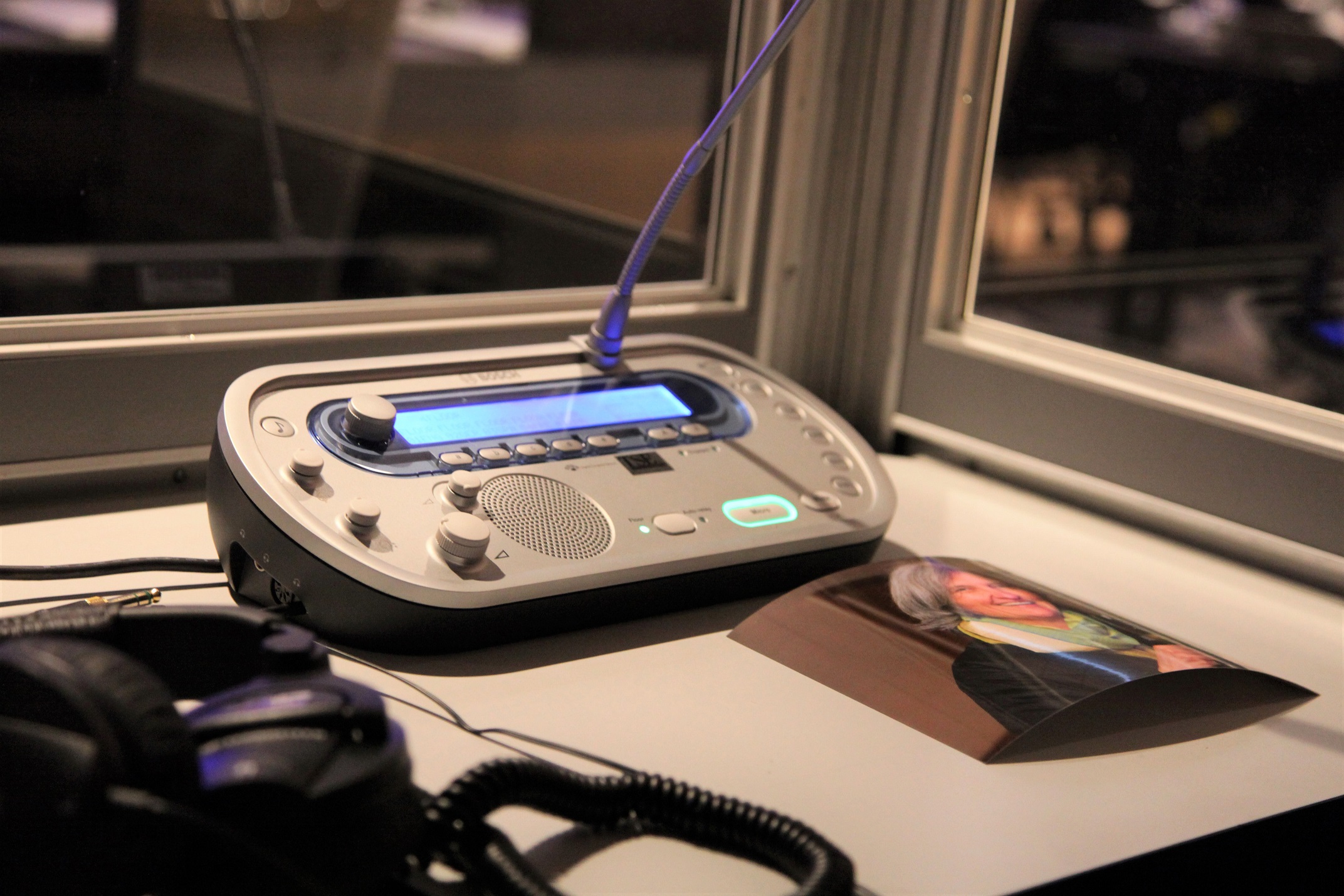
Can you hear me?
By Maria Wolf
Translated by Colin Rae
“May I just … hello?” Too late. The other participants have already left. Nobody saw me wave for attention and my pleas went unheard because it took too long to activate the microphone. After an hour and a half of “Can you hear me? Yes? No? Okay, as I was saying…,” and endless repetitions because of, well, any number of reasons, I’m quite simply just plain annoyed. By now, the wrinkle of concentration on my forehead resembles the Grand Canyon. And after being transported to the depths of despair, I’m supposed to rate the call quality. I can award only stars, but a black hole would be more appropriate.
It can be hard enough to keep a fruitful discussion going during a monolingual video conference – videos freeze, speech rattles or gurgles like a sinking submarine, information gets fractured, and requests to speak get lost in the shuffle.
So you can imagine how much larger these obstacles become when multiple languages are in play. Technological latencies may be joined by those caused by the dizzying dance between original sound, the correct voice channel and microphone settings. Over the past few years – and especially over the past few weeks – the technology has come on in leaps and bounds, and moderators, participants and interpreters have learned a lot. However, communication during virtual meetings is often still jarring and considerably more demanding than at face-to-face events.
But what is it that makes virtual meetings so stressful? At a face-to-face meeting, our ability to conduct a conversation is underpinned by a wide network of signals: body language, gestures, facial expressions and the atmosphere in the room all help us to not only intuitively assimilate and process information, but also analyse and grasp situations. Many of these are routine processes that take place in the energy-efficient parts of the brain.
In contrast, virtual meetings seem decidedly one-dimensional and rob us of the vast majority of non-verbal communication that helps us understand each other. Although – and really because – many of these signals are removed, video conferences demand a higher level of concentration. They require action from energy-intensive parts of the brain in order to process information and react appropriately.

Remote technology is especially demanding for interpreters. Much to our chagrin, we have in the past often been banished to another room, which may or may not have had a booth, where we could watch what was happening at the conference on monitors. But there at least we had our trusty control consoles and a cable connection, which together provided clean, sound-adjustable reception, virtually no latency and the means with which to easily communicate with our team partners and support each other. But even this setup, which was generally necessitated by a lack of space, was more demanding for interpreters since it tended to allow us to see the speakers only from a distance. This meant that we couldn’t follow people’s facial expressions and mouth movements, or if so only with a delay, and had to work without most of the non-verbal aids to communication.
COVID-19 is turning the world upside down and we have all been cast into the exile of remote working, at least for the time being. But ensuring that all participants in international, multilingual meetings can have an equal say in the discussion calls for adequate technology, skilled technicians, experienced moderators and, last but not least, professional interpreters.
The crisis is now giving rise to a number of improvised solutions, including setting up several phone lines to be used in parallel to the video conference to provide separate interpreting channels. But the solutions being cobbled together are more rough than ready, and it’s often the conference participants relying on the interpreters who are getting short changed. Patchy connection quality, technical latencies and complicated changeover procedures – to avoid accidentally activating or silencing the wrong line – tend to intimidate participants and impede spontaneous contributions. Not wanting to make a fuss or come off as annoying, people then keep their valuable ideas to themselves and let technology get in the way of asserting themselves.
Achieving the right conditions for a successful and efficient virtual discussion culture hinges on thinking big: stable channels, intuitive control consoles, high-performance headphones and microphones for seamless input and output, an undisturbed setting and suitable platform tools for special scenarios. Moreover, it’s crucial that all participants are given a thorough briefing on how the setting will be used. And the icing on the cake would be to have a couple of dry runs in advance.
Remote interpreting – Connecting over distance
Although remote interpreting, in consecutive form, has been a tool in areas such as justice and medicine since the 1990s, the coronavirus crisis has greatly accelerated both the demand for and development of solutions for simultaneous interpreting. Over the past few years, interpreting associations such as AIIC, VKD and FIT as well as conference technology providers have developed standards and technical solutions to support remote simultaneous interpreting. But this was done under the assumption that there would be just two locations at any one time: the event location with all participants in one place, connected to a separate interpreting hub somewhere else.
The coronavirus pandemic brought with it strict physical distancing rules, which in turn are providing the market with new challenges. Both providers and users of software-based interpreting platforms are scaling a steep learning curve as they adjust their toolboxes to fit the new formats for multilingual events that are emerging. The best solutions might seem complicated and they are generally just as expensive as traditional configurations. But the bonds forged by language should not be undone by technology. Improvised remote setups with wonky connections not only undermine the quality of interpreting and communication, but also hang participants out to dry. And let’s not even talk about data protection.
Klein Wolf Peters is only too happy to advise and support international events and meetings by supplying both expertise and experienced interpreters who hang on speakers’ every word, even from hundreds of miles away. We take you beyond “Did you hear me?” to reach “Yes, and I also understood you.”



Comments (2)
I love this last sentence: “We take you beyond “Did you hear me?” to reach “Yes, and I also understood you.””
mfG
Magali
Bonjour Magali, Thank you for your feedback. Yes, it sounds like a truism, but people forget how important it is to not only be “heard”. 🙂